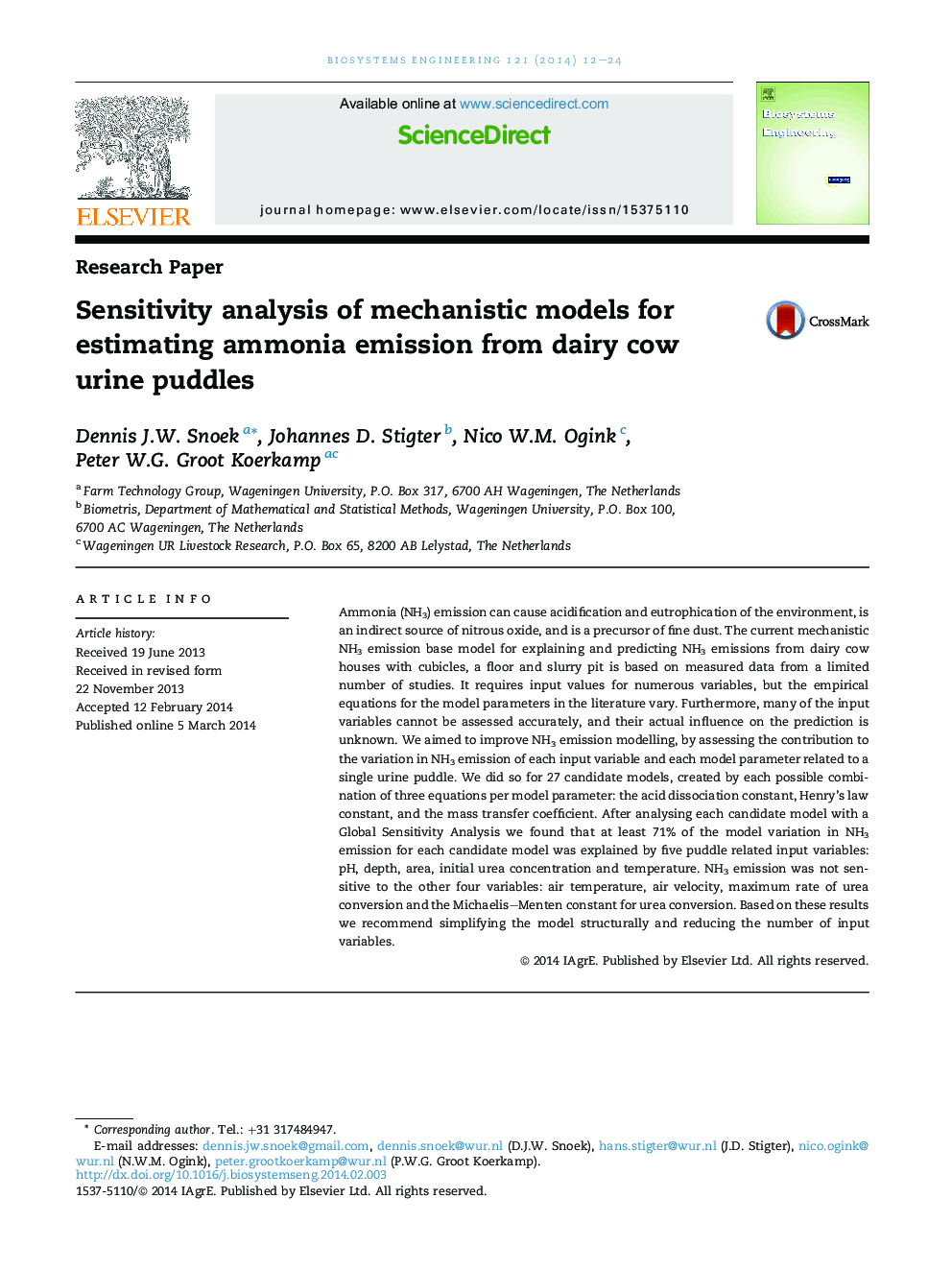| Article ID | Journal | Published Year | Pages | File Type |
|---|---|---|---|---|
| 8055203 | Biosystems Engineering | 2014 | 13 Pages |
Abstract
Ammonia (NH3) emission can cause acidification and eutrophication of the environment, is an indirect source of nitrous oxide, and is a precursor of fine dust. The current mechanistic NH3 emission base model for explaining and predicting NH3 emissions from dairy cow houses with cubicles, a floor and slurry pit is based on measured data from a limited number of studies. It requires input values for numerous variables, but the empirical equations for the model parameters in the literature vary. Furthermore, many of the input variables cannot be assessed accurately, and their actual influence on the prediction is unknown. We aimed to improve NH3 emission modelling, by assessing the contribution to the variation in NH3 emission of each input variable and each model parameter related to a single urine puddle. We did so for 27 candidate models, created by each possible combination of three equations per model parameter: the acid dissociation constant, Henry's law constant, and the mass transfer coefficient. After analysing each candidate model with a Global Sensitivity Analysis we found that at least 71% of the model variation in NH3 emission for each candidate model was explained by five puddle related input variables: pH, depth, area, initial urea concentration and temperature. NH3 emission was not sensitive to the other four variables: air temperature, air velocity, maximum rate of urea conversion and the Michaelis-Menten constant for urea conversion. Based on these results we recommend simplifying the model structurally and reducing the number of input variables.
Related Topics
Physical Sciences and Engineering
Engineering
Control and Systems Engineering
Authors
Dennis J.W. Snoek, Johannes D. Stigter, Nico W.M. Ogink, Peter W.G. Groot Koerkamp,
